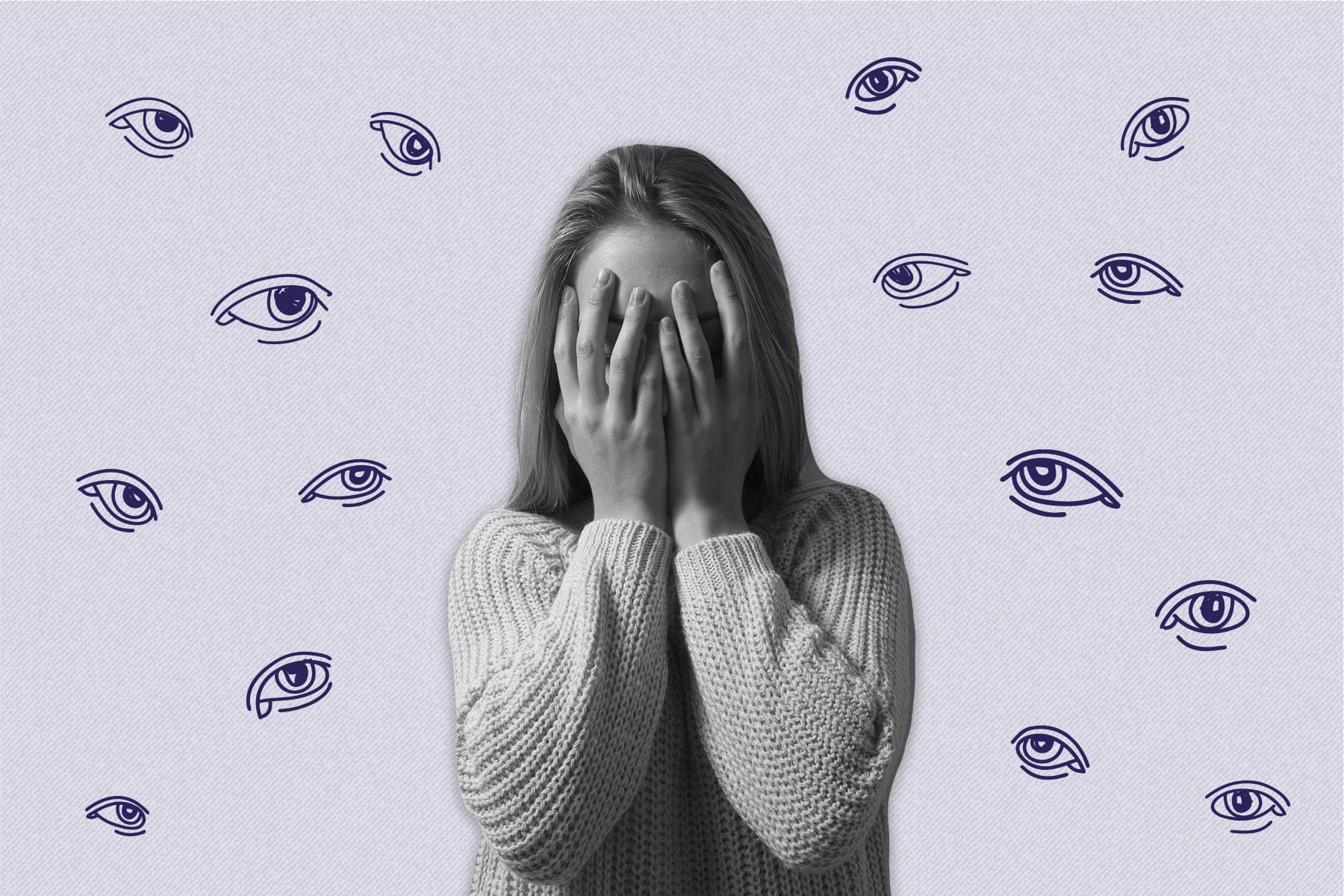Do you often think about past conversations you have had, or what other people are thinking about you in social interactions? Do you have high standards for how you act around others? Those with social anxiety highly focus on their behaviour, appearance, and speech. During and after social interactions, they may analyze and think about their behaviour. This is done to learn from experiences and improve future interactions. This leads to increased pressure to manage how others view them. They may focus on their behaviours so much that it can lead to overthinking and a fear of making mistakes. People with social anxiety believe that social interactions will go wrong. They may act in ways to reduce the risk of negative consequences such as embarrassment or not being liked. This can influence their self-presentation, by showing a guarded version of themselves.
Safety Behaviours
Behaviours showing social anxiety include shaking, not talking clearly, awkward pauses, or seeming tense and fidgety. They may find it hard to start and keep conversations going. These behaviours are seen as a lack of social skills by others. Others also sense that they are uncomfortable and nervous during conversation. Social approach behaviours leave a positive mark on others. This includes looking engaged and friendly, and sharing interests.
A study by Rassaby et al., (2023) looked at how socially anxious people act in social situations. There were two situations: a back-and-forth conversation and giving a speech. They found that those with social anxiety had two types of safety behaviours. Safety behaviors are things people do to feel safer in a situation. They depend on the context and anxiety levels.
Avoidance
The first is avoiding social situations. This limits the risk of judgment or embarrassment. These behaviours include avoiding eye contact and limiting how much they talk. Those who used these behaviours in social interactions had negative moods, seemed more anxious, and were less likely to approach others.
Self-Presentation
The second is self-presentation. This is controlling what others think to show a positive self-image. Those who self-monitor are found to think about the social event after it happens. It may look like hiding anxiety or pretending to agree with others. The findings show that monitoring behaviour gives way to better mood. They also found positive behaviours like approaching others.
In the study, people without social anxiety were asked to use safety behaviours. They experienced anxiety when using these behaviours. This shows that trying to hide social anxiety creates more anxiety. Self-monitoring shows to be a better way to deal with social anxiety compared to avoidance. Those with social anxiety are aware of the mistakes they make during social interactions. No one is perfect and everyone makes mistakes during social interactions. It can be tricky to have social anxiety since it makes it feel like only you are imperfect.
Author: Sofi Kotilehti
Evans, R., Chiu, K., Clark, D. M., Waite, P., & Leigh, E. (2021). Safety behaviours in social anxiety: An examination across adolescence. Behaviour research and therapy, 144, 103931. https://doi.org/10.1016/j.brat.2021.103931
National Institute of Mental Health. (2022). Social Anxiety Disorder: More Than Just Shyness. Mental Health Information. https://www.nimh.nih.gov/health/publications/social-anxiety-disorder-more-than-just-shyness#:~:text=Social%20anxiety%20disorder%20is%20an,social%20anxiety%20disorder%20is%20treatable
Rassaby, M., Smith, T., & Taylor, C. T. (2023). Examining Safety Behavior Subtypes Across Distinct Social Contexts in Social Anxiety Disorder and Major Depression. Behavior therapy, 54(3), 572–583. https://doi.org/10.1016/j.beth.2022.12.009
Svennevig, J. (2014). Direct and Indirect Self-Presentation in First Conversations. Journal of Language and Social Psychology, 33(3), 302–327. https://doi.org/10.1177/0261927X13512307

No comments:
Post a Comment